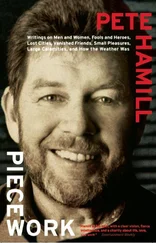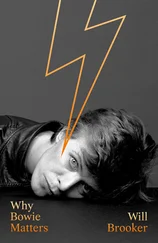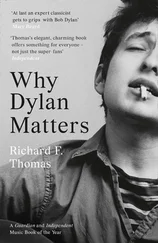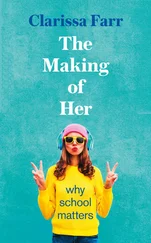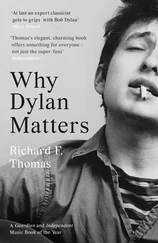He wasn’t truly good again as a movie actor until 1949, when he teamed up once more with Kelly in an MGM musical called Take Me Out to the Ball Game , and quickly followed it with a movie masterpiece, On the Town. Another story of sailors on shore leave, this time in New York, the film was codirected by Kelly (who also stars) and Stanley Donen. It was written by Betty Comden and Adolph Green. Music for a ballet was composed by Leonard Bernstein. The reviews were raves. Sinatra’s star should have been ascending.
Instead, he was heading for the Fall.
II . The Fall was essential to the Sinatra myth. Most of it was a combination of bad timing, dreadful luck, and self-inflicted wounds. It didn’t happen all at once; instead, the Fall started small and gathered strength, like a landslide.
First, Sinatra alienated the Hollywood press corps. He would have one too many drinks in some public place and curse them all for whores and pimps. He started firing off thin-skinned telegrams to various columnists, including Louella Parsons, then the most famous paid yenta in Hollywood. In 1946 the Hollywood Women’s Press Club gave Sinatra the “Least Cooperative Actor” award. He was not contrite. Then, on April 8, 1947, in Ciro’s nightclub in Hollywood, Sinatra punched out Hearst columnist Lee Mortimer, who had been needling him in print for many months. The cops were called. Charges were filed. Sinatra was arrested. To be sure, it was not as if he had punched out Mother Cabrini. In almost four decades in the newspaper business, I have never met anybody who liked or respected Lee Mortimer; he was a nasty, mean man, a poor reporter, a worse writer, and the king of the “blind item.” But it was a critical mistake for Sinatra to belt him. Newspaper people who despised Mortimer suddenly started getting much tougher about Frank Sinatra; as contemptible as Mortimer was, he was part of their guild, not Sinatra’s. The singer had to pay Mortimer $9,000 to settle out of court. But there were more lasting consequences. The Hearst chain was then a powerful national force and had already been sniping at Sinatra over his liberal politics. Now the attacks intensified. He was Red-baited by the chain’s star columnists, Westbrook Pegler and George Sokolsky, and subjected to a campaign that dripped with innuendo. Sinatra was presented as naive or gullible at best, an agent of the Red conspiracy at worst. Sinatra, of course, wasn’t close to being a communist; he was, like millions of other Americans, a committed New Deal liberal. But the Hearstlings didn’t care about the facts. They wanted to destroy Sinatra, and in the growing postwar anticommunist hysteria, they had many allies. Hollywood was becoming a major target of the anticommunist crusaders; the cynical among them knew that hauling a Hollywood figure before a committee would bring bigger headlines than would interrogating some high school math teacher who had been a communist for three weeks in 1934. The true believers among the crusaders were convinced that Moscow was smuggling anti-American propaganda into the most brainless Hollywood productions. Most of this was absurd. But studio bosses were never profiles in courage, and because of their fear and trembling, the blacklist soon became a fact of Hollywood life. Sinatra was marginal to that story but never completely immune. In the placid postwar years he was starting to look like a whole lot of trouble.
Early in 1947 Sinatra did another job on himself, providing a context for the Mortimer affair and building a crucial element in his life that would stay around until he died. At some point in January he accepted an invitation to go to Havana from Joe Fischetti, the youngest of the three Fischetti brothers, who were among the second-generation hoodlums then running the Chicago rackets established during Prohibition by Al Capone. Sinatra had known the Fischetti brothers from before the war, when he had played a joint they ran in Chicago. Sinatra said, Why not? In those days a trip to Havana was as routine as one to Miami.
But there are several ways to interpret this journey. One is dark. According to this version, Frank Sinatra had been connected to the Mob for at least five years. In particular, he was obligated to them for one big favor. Back in 1943, when he was at the peak of the first stage of his fame, he was also being ruined financially by the terms of the release he had signed with Tommy Dorsey. The bandleader insisted on taking almost 55 percent of Sinatra’s earnings; expenses and taxes consumed the rest. Dorsey refused to negotiate; a deal was a deal, and fuck you, kid. So Sinatra reached out to the Mob. In some versions of the tale, Dolly Sinatra went personally to see Longie Zwillman at his mansion in New Jersey; in others, Sinatra made the visit himself. Zwillman was outraged at the injustice of it all and put Willie Moretti on the case. In the spirit of conciliation and compromise, Moretti walked into Dorsey’s dressing room, shoved a pistol into the bandleader’s mouth, and told him to give Frank Sinatra a release. Dorsey instantly agreed.
Most Sinatra biographers, including those who are not soft on Sinatra’s personal history, dismiss this story as pure invention. The research indicates that Sinatra obtained his release after a year of tough bargaining by his powerful agents from the Music Corporation of America (MCA) and some equally tough lawyers. Dorsey was persuaded that he could not afford the publicity that would come his way if the contract became the center of a court case; Sinatra, after all, was among the most popular entertainers in the United States. Dorsey settled for $60,000, and he and Sinatra went their separate, if unhappy ways. The myth has a certain logic and great durability. I heard it as a teenager from the apprentice hoodlums I knew in Brooklyn; it was repeated to me by cops and old reporters when I was a young newspaperman.
For whatever reason, in February 1947 Sinatra flew to Havana, promising to meet Nancy later in Mexico City. Alas, he was photographed getting off a plane with Joe Fischetti. Both men were wearing sunglasses and carrying attaché cases; they definitely looked like a pair of gangsters. They went to the Hotel Nacional, then the grandest hotel in the Cuban capital, and checked into separate rooms. Sinatra immediately found himself at the largest Mob convention since the late 1920s. The most honored guest was Charles (Lucky) Luciano himself.
It remains unclear whether Sinatra knew that Luciano would be in Havana; if he did, it should be no surprise that he would want to meet him. Charlie Lucky was a legendary figure during Sinatra’s youth and was still one of the most famous gangsters in the world. The romantic aura of the bootlegger was still attached to such men; they were not yet committed to the wholesale peddling of heroin. Luciano was then living in exile in Naples as the result of a deal worked out during the war whereby the imprisoned Mob boss agreed to do what he could to help the war effort. Or so we were told by purveyors of the myth. Luciano bragged later that he had made this deal while serving a thirty-to-fifty-year sentence for white slavery in Dannemora prison. (That sentence, by the way, was almost certainly the result of a frame-up.) Luciano claimed that he had helped secure the New York waterfront against sabotage and then set up intelligence networks for the Allies before the invasion of Sicily. The grateful Americans then cut his sentence, released him in 1946, and deported him to Naples. He couldn’t return to the United States but was, of course, free to go to Cuba. The Mob bosses — including Frank Costello, Meyer Lansky, Carlos Marcello, Joe Adonis, and dozens of others — had assembled to honor Charlie Lucky, pledge loyalty, deliver him some cash, discuss business (including a plan to kill Bugsy Siegel, who was not in Havana but preparing to invent modern Las Vegas). They would also have fun.
Читать дальше



